Career Development PlannerIt’s estimated that 90 percent of our daily lives is spent doing routine tasks. But habit can be a bad thing, because “if you keep on doing what you’ve always done, you’re going to keep on getting what you’ve always got.” One of the most important things you can do is to take the time to plan your career roadmap for 2023. Whether you are thinking of a job change or career change in the new year, or simply get more out of your current job, a career plan is essential to helping you reach your goal for professional development. This exercise may take you 20 minutes, or you might devote a few hours to planning where you want to be on New Year’s Day 2023. If you want your life to be different in 2023, especially your career, take the time to work on your career roadmap. You may decide to use multiple planners including a success planner and a CAREER DEVELOPMENT PLANNER. Step 1: Take StockThe first step is to assess where you are. To figure out where you’re going, you must first look at where you’ve been. Here are some questions to help you assess where you are: ¨ What are you most proud of this past year — personally, and professionally? ¨ What went right this year? ¨ Did you receive any awards or recognition this year? ¨ Did you take on any additional responsibility this year? If so, what? ¨ How did you take initiative in your job this year? ¨ Have you learned any new skills? ¨ Did you earn any certifications or licenses? Record this information in a success journal. This can be a Microsoft Word file on your computer, a note in Evernote, a series of emails you send to yourself (be sure to use email tags so you’re able to find the emails again!), or even a physical notebook. And in the coming year, take time to record your accomplishments as you go through the year instead of waiting until the end of the year. Next, look at opportunities for improvement in your career. How does your salary stack up against your peers? Is your current position in alignment with your priorities and your core values? Where is change needed? This is when it helps to use a detailed career planner. Step 2: Articulate Your GoalDecide what you want. What is your goal for professional development? Spell it out: What does it look like; what does it feel like? You have to really want it to invest the time and energy to follow your dream. Describe your ideal job:
Think about the person that you want to be, and imagine the possibilities. If a career change is in the horizon, it helps to take a career change quiz. Then, identify 2-3 goals you want to tackle. Use the S.M.A.R.T. goal system to articulate your goals — goals should be “Specific, Measurable, Attainable, Realistic, and Time-Oriented.” For example, let’s imagine you have worked as an Accountant for the past three years, but you really want to work in marketing. Your goal might be: “By Jan. 1, 2023, I will be working as a Marketing Assistant in a Fortune 1000 company” You should also write down why you are interested in making the change. In other words, what is your motivation for taking this path? Another good question to ask yourself is, “How will I know when I’ve achieved my goal(s)?” Step 3: Make a PlanTake time to prepare a game plan and use a career planner for how you will reach your goal. But don’t use planning as an excuse to procrastinate. You want to get to Step Four as quickly as possible because actions create momentum. Take each of your goals and write down the list of steps under each of them that you will need to take to make the goal happen. The more individual steps you can map out, the easier it will be for you to reach your goals. The steps should be practical tasks that will lead you to achieve your goal for professional development. For example, with our goal of making a career change from accounting to marketing, here are some sample steps:
Give yourself milestones so you can measure your progress. How will you know when you’re on the right track? Include specific dates and numbers in your milestones. Step 4: Take ActionThe tasks you’ve outlined in Step Three, give you a checklist of items to use to take action. If you are working through the steps and discover you need to add additional items, update your task list. You may also discover additional projects that need to be completed to make the next step — and the overall goal — easier to accomplish. You may also find that you need to make adjustments to your timeline. For example, if you discover that a six-month program to learn about professional social media marketing would help you land your new marketing job, you might adjust your goal deadline to March 1, 2023, if the program won’t be completed until late December 2022. This would give you time to put some of the new skills into practice before you put them on your résumé. As you work your way through your task list, focus on the actions you are taking, realizing that if you are taking the right actions, these should eventually lead to the results you seek. If you’re not getting the results you want, change the plan, not the goal. Re-examine your tasks and see if there is something you are missing. It can also be helpful to get outside feedback. Enlisting the help of an accountability partner — a friend, family member, career coach, resume writer, or therapist — can provide valuable perspective on your progress. This individual can also keep you on track, making sure you are working through your task list. And if there is a specific area where you need help in order to cross the task off your list, make sure you ask for assistance. For example, writing a resume to support a career change can be difficult. Enlisting help from professional resume writing services can help you cross that task off your list. Step 5: Measure Your ProgressWhen you’re on a journey, it can help to periodically assess where you are to make sure you’re on the right road. If you miss a step along the way — or take a “wrong career path” — you can find yourself a long way from your intended destination. So, plan periodic assessments of your progress along the way. This can be a monthly “check-up” where you review your plan and make any necessary changes or a quarterly review. Taking the time to think through — and plan out — your career roadmap is an important step in helping you create the career you want for yourself. If you don’t, you may find your career stuck or stalled. Or you may wake up five years from now and wonder, “How did I get here?” If you want to achieve more in your professional life, invest the time and effort in completing the Career Roadmap Worksheet below. CAREER DEVELOPMENT WORKSHEETUse this worksheet with your career planner TEP 1: TAKE STOCK Current Job Title: Start Date of Current Job (month/year): Current Salary: What I Like Most About My Current Job: What I Would Want to Change About My Current Job: STEP 2: ARTICULATE YOUR GOAL What Is Your Goal? STEP 3: MAKE A PLAN What Are the Specific Steps (Tasks) You Need to Take In Order to Achieve Your Goal? STEP 4: TAKE ACTION What Help (Outside Assistance) Do You Need to Reach Your Goal? Who Is Your Accountability Partner? STEP 5: MEASURE YOUR PROGRESS How Close — or How Far Away — Are You To Reaching Your Goal At This Moment? Do You Need to Make Any Adjustments in the Goal, Tasks, or Deadline? SOURCE: https://www.market-connections.net/blog/career-development-planner About the AuthorMandy Fard is a Certified Professional Resume Writer (CPRW, CMRW) and Recruiter with decades of experience in assisting job seekers, working directly with employers in multiple industries, and writing proven-effective resumes. “If you don’t know where you are going, any road will get you there.” LinkedIn ABOUT SectionThe “ABOUT” section of your LinkedIn profile is a vital part of your LinkedIn presence. The ABOUT section on LinkedIn used to be called LinkedIn Summary and it was recently renamed to ABOUT section. Another very important part of your profile is your Linkedin Headline. Some online marketing gurus believe that your LinkedIn Headline is one of your most valuable pieces of online real estate. That's why we should all invest the time to learn how to write a good LinkedIn Headline. You have 2,600 characters to give readers a snapshot of who you are. This can total about 450 to 500 words. It can compare to almost one full page in MS Word, using size 12 fonts. When looking at the LinkedIn profile on a desktop computer, first 2-3 lines of the ABOUT section will be visible with a “see more” link. When someone is using the LinkedIn app on their mobile phone, only the first six to ten words of your ABOUT section will appear. So, the first 2-3 lines must instantly get your prospects interested in your profile — or, even better, get them excited about reading the rest of your profile. LinkedIn ABOUT IdeasHow do you add more value to the company, or solve problems better than other job candidates? Your LinkedIn ABOUT section can set you apart from other job seekers on LinkedIn by demonstrating that you understand what employers want — and what you have to offer that meets that need. Address these questions:
LinkedIn TipsWrite naturally and conversationally. In contrast to your résumé, you should use pronouns in your LinkedIn ABOUT section. Speak in the first person, not third person. (“I did such-and-such.”) Write as if you’re speaking to an individual reader. Make it personal. Be sure to emphasize outcomes — as well as what makes you uniquely qualified to do the job you do. Try to find a common thread through your work. Then, once you have a theme, use storytelling principles to write your summary as a narrative. Have a beginning, a middle, and an end. Your LinkedIn ABOUT section can be anywhere from a few sentences up to a few paragraphs. But don’t waste any words — make the most dramatic, powerful, attention-getting statement you can. Don’t use any more words than is necessary, and don’t be overly flowery in your language. LinkedIn ABOUT Section ExampleNotice the format:
The point of the first sentence is to get the prospect to read the second sentence. And the next sentence. And the next. Be conversational and informal in your tone. Use contractions (“you’re” instead of “you are”). Every word counts! And pay attention to grammar and spelling. Make sure there are no mistakes in your profile. Re-read and edit it. Have a colleague, friend, or spouse read it. Copy-and-paste it into a word processing program and run a spell-check on it. You can also use asterisks, dashes, hyphens, and other keyboard characters to format the ABOUT section and make it easier to read. Using these strategies, you can develop a LinkedIn ABOUT section that will lead to job opportunities, contacts from prospective employers and recruiters, and increased visibility online for your job search. ABOUT THE AUTHORMandy Fard is a Certified Professional Resume Writer (CPRW, CMRW) and Recruiter with decades of experience in assisting job seekers, working directly with employers in multiple industries, and writing proven-effective resumes.
Perhaps you have followed every instruction on how to make your resume stand out. But a self-introduction video can add life to your resume. Videos transform a static, traditional message into an action-driven presentation that will unleash your message in a powerful, dramatic way.
Videos also give the unique opportunity to communicate with your target audience in a way that puts you in touch with what is truly important to them, what motivates them, and what will leave an everlasting impression. This post will point out tips to get you started with creating a self-introduction video for your job search. Video Quality Is Important
To create the very best videos you need to use the right tools. Chances are you don't want to create a lengthy video. So, consider using a formula for a quick introduction. Your audience is not going to expect a Hollywood production from you but they will expect good quality. If you make low-quality videos then you will quickly lose your audience. Worse than that, you will misrepresent your communication skills.
Get the Right Equipment
A good HD camera is essential for making the best videos. If you have a smartphone then the camera in this is likely to be good but you should think about investing in a good quality webcam or outdoor camera. A smartphone video is better than nothing but other cameras will produce better results.
If you are going to shoot most of your footage indoors then an HD webcam that you can connect to your computer is a good choice. There are some good examples available on Amazon and other online retail websites. You should be able to find a high-quality webcam for under $100. You must use a high-quality microphone for your videos. Your audience isnot going to be impressed if the audio quality of your videos is poor. There are plenty of good-quality microphones available for under $100. Do you need to purchase lighting equipment for your videos? Again, this is a concern for indoor videos more than outdoor ones. It is crazy to put in a lot of planning and effort to make your videos and have them spoiled by poor lighting conditions. There are low-cost lighting solutions available. Video Editing Software
You are going to make mistakes when you are creating your videos so you need to use a good video editing application to make your videos the best they can be. Fortunately, there are a lot of free video editing solutions available for both Mac and Windows computers.
There are premium video editing suites that have a lot of great features but you don’t need these to get started. Search for free video editing software and you will see many useful applications you can use. Make sure that you learn how to use your chosen video editing software. Screen Capture Software
You will likely want to record your computer screen and use this in your videos. To do this, you will need screen capture software. There are some really good free options available for this and you can use premium solutions too.
You can integrate slides that you have created in Microsoft PowerPoint or other presentation applications. Screen capture software is great for making over-the-shoulder videos where you are demonstrating something on your computer (i.e.: your portfolio, pictures of your work, etc.) Use Audio Editing Software
The audio quality of your videos is very important. A lot of video marketers record the narration for their videos after they have the main footage. You can use a powerful free audio editing suite like Audacity to produce the best audio results.
SOURCE: https://www.market-connections.net/blog/create-a-self-introduction-video-for-your-job-search
About the AuthorMandy Fard is a Certified Professional Resume Writer (CPRW, CMRW) and Recruiter with decades of experience in assisting job seekers, working directly with employers in multiple industries, and writing proven-effective resumes. Customize your ResumeTake the time to customize your resume — it demonstrates your interest in a job and shows you have taken the time to tailor the resume to the role being sought.
About the AuthorMandy Fard is a Certified Professional Resume Writer (CPRW, CMRW) and Recruiter with decades of experience in assisting job seekers, working directly with employers in multiple industries, and writing proven-effective resumes. When the Recruiter Calls - Dos and Don'tsRecruiting, retained or contingency, involves (or should, anyway) directly approaching individuals who, based on their title or position, might well have the experience to handle the position their client (employer) is seeking to fill. The individuals who are approached are often employed at one of the client's competitors. You may have wondered about how to find the right recruiters. But now recruiters are calling and if they are seeking you, what would you do? What would you do when a recruiter calls and briefly outlines an opportunity with an unnamed company? If you're unhappy where you are and the opportunity sounds interesting, you'll want to know more. But I'm not talking about that scenario. I'm talking about the response when you ARE happy where you are. Because there's a smart way to respond and a not-so-smart way to respond. And either choice impacts your career far more than you'd think it does! So there you are, sitting at your desk working on an important project when the phone rings. And you pick it up. It's a recruiter, who introduces himself and his firm and asks if you have a minute. What do you say? "Thanks for calling, but I'm happy where I am." And hang up the phone? WRONG ANSWER!!!! Why? Because you just cut yourself off from knowing what's moving and shaking in your industry, which means you just cut yourself off from learning how to access the hidden job market that could potentially leverage your career. You've just decided to limit your options. And if you don't have access to information, you won't know how to evaluate a job offer and you can't make an informed decision, can you? What should you do instead? No matter how happy you are with your current company, listen to what the recruiter has to say. You have a far better chance of leveraging your career when a recruiter calls than when (and if) you contact a recruiter. Some people are truly happy with their current position and not interested in currently making a change, regardless of the opportunity presented to them at that moment. But you listen anyway; this is when it is beneficial to practice listening as a skill. Not because you want you change jobs, but to develop a relationship and keep yourself informed and in control for when you do need to change. A friend of mine went with a company that had statewide offices. She began in their corporate office right out of college. Over the years, she obtained her MBA and continued moving on up through the ranks. For TWENTY-FIVE years she was with this company.....until she was laid off a few months ago. She hadn't seen it coming. And she freaked out. If YOU aren't in control of your career, then your company IS. Corporate restructuring, layoffs and downsizing are taking place with alarming frequency as companies tighten their belts and look hard at who is contributing and who isn't. Sometimes it isn't even a matter of contribution. Sometimes it's simply eliminating an entire department - and it has nothing to do with YOU, individually, at all. For instance, it's not uncommon for a new manager or president to come in and bring his people with him. It can happen quickly and it can happen to you. Will you have a network to fall back on if it does? Will you have relationships developed with recruiters that you can tap into at a moment's notice? Develop it before you need it. The time to take control of your career is exactly when you think it isn't necessary: when you are happy and successful where you are. About the AuthorMandy Fard is a Certified Professional Resume Writer (CPRW, CMRW) and Recruiter with decades of experience in assisting job seekers, working directly with employers in multiple industries, and writing proven-effective resumes. |
Categories
All
powered by Surfing Waves
AuthorMandy Fard is a Certified Professional Resume Writer (CPRW, CMRW) and Recruiter with decades of experience in assisting job seekers, working directly with employers in multiple industries, and writing proven-effective resumes. Archives
July 2024
|
-
Greater Los Angeles
and Kern County
-
[email protected]
.

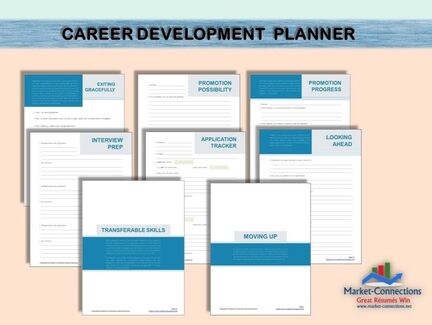
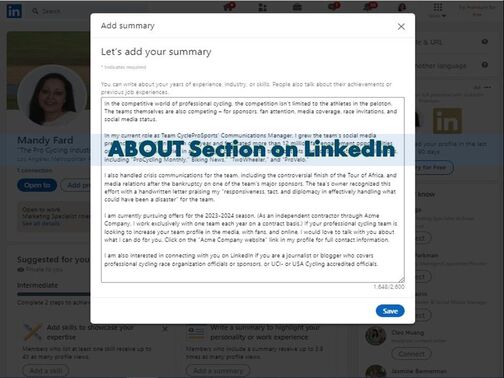
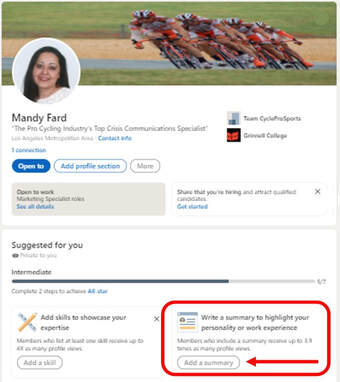

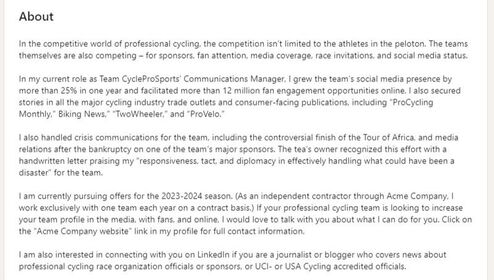
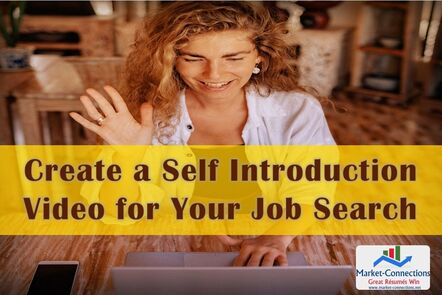
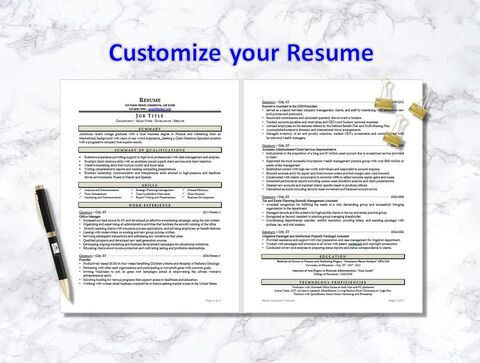

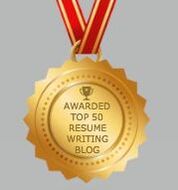

 RSS Feed
RSS Feed



